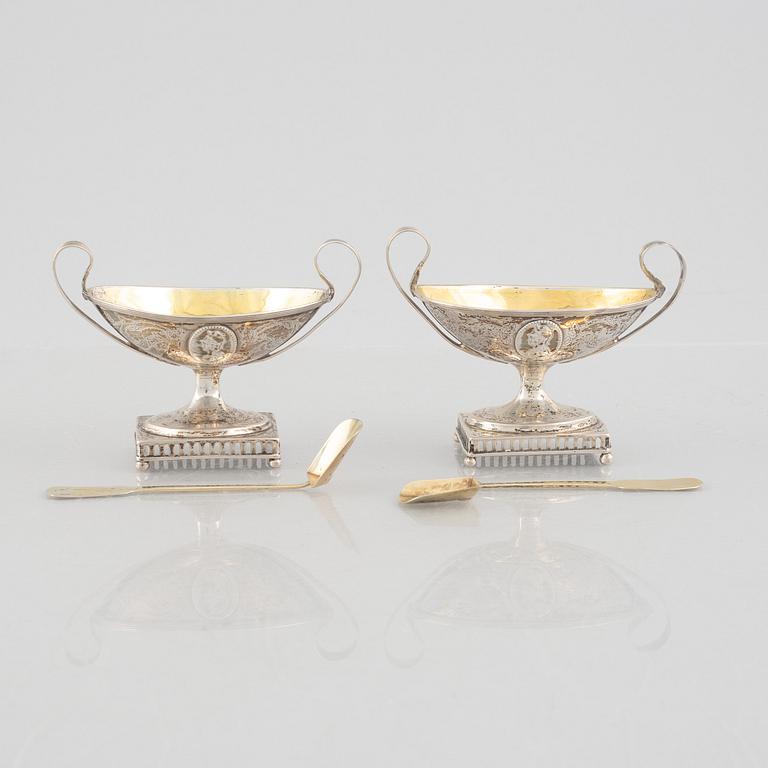Gustaviansk
A pair of Swedish silver salt cellars, mark of Pehr Zethelius, Stockholm 1805.
Interior gilding. Oval with a medallion, raised handles with banded decoration, on a rectangular foot with a pierced border and ball feet. One with an unclear year mark. Height 8.5 cm.
Weight together 153 grams.
A pair of gilded salt spoons, one of which is damaged, accompanies, Johan Fredrik Wolfram, Stockholm 1839, weight 13 grams together.
Repaired hinges. Minor dents and wear.
Designer
The Gustavian era fell between 1775 and 1810. The furniture then takes on, in contrast to Rococo, a more restrained contour. The legs become straighter and tapered, the colours become softer in mostly grey-green and grey-blue tones. Typical to the Gustavian time is intarsia, inlays with medallions and classical borders. The chairs backrests are often straight spindles or a curved bundle of spindles, with the finer chairs have a padded back with a rosebud decoration at the top. A significant detail is the flower, "fleuron", which is often found in corner ornaments, leaf scroll decoration, and festoons of leaves, flowers, or fruits. Between the years of 1785-1810 is commonly known as the late-gustavian era and is known for its rigid clacissism. Rich intarsia decoration was replaced by smooth, dark mahogany with elegant brass fittings and moldings.
Read more





























































